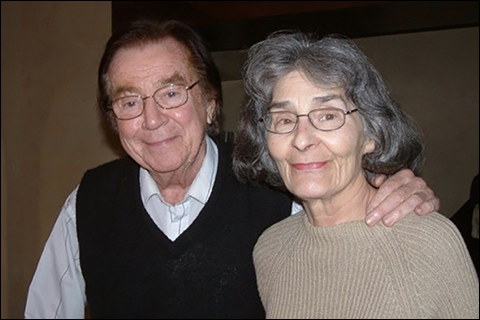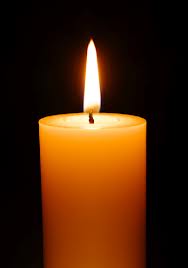April Third Movement
Margo Drekmeier

(Photo credit: Courtesy of the family)
Dr. Margot Loungway Drekmeier Died peacefully on February 26, 2008, just short of her 76th birthday and her golden wedding anniversary. Born in Boston on March 14, 1932, she was proud of the strain of Iroquois blood inherited from her father. After completing Girls Latin School, she attended Oberlin College where she majored in history and served as president of the student council in her senior year. She earned her doctorate from Harvard in the field of European history, the result of a year's study at the Bibliotheque Nationale on a Fulbright grant.
In 1958 she married Charles Drekmeier, a fellow graduate student, and the two moved to Palo Alto to teach at Stanford. Margot taught in the Western Civilization program and in the Department of History. The focus of her scholarly interests was cultural and intellectual history of Western Europe. The year after her arrival at Stanford she, her husband, and two other faculty members started an honors program called Social Thought and Institutions, which continued for 23 years. She also participated in a number of Peace Studies courses.
Margot is survived by her husband, Charles; brothers, John Loungway (Lorna), Duncan Loungway (Nancy); children, Nadja May (Harry), Peter Drekmeier (Amy Adams), Kai Drekmeier (Sarah) and their children Emily and Beatrice, as well as many nieces and nephews. Margot will be remembered as a loving mother and wife and for her deep commitment to human rights, social justice and environmental protection. A memorial is planned for April 5, 3pm at First Presbyterian Church of Palo Alto.
Published by San Francisco Chronicle on Mar. 9, 2008.
Margot Drekmeier
Palo Alto, California
Margot Drekmeier, mother of Palo Alto Vice Mayor Peter Drekmeier and founder of the program Social Thought and Institutions at Stanford University, died peacefully Feb. 26, 2008. She was 75.
She was born March 14, 1932, in Boston, Mass. She attended Girls Latin School in Boston and majored in history at Oberlin College, where she served as president of the student council in her senior year. She later earned a doctorate degree from Harvard, met and married Charles Drekmeier, and moved to Palo Alto. The young couple traveled cross-country to Palo Alto in one of the first Volkswagens buses that became popular in the 1960s, her husband remembers.
Together, they founded the program in Social Thought and Institutions, which continued for 23 years. She also taught in the Western Civilization program in the History department after the couple moved to Palo Alto in 1958 and began teaching together at Stanford. "She taught seminars in the History department," Charles said. "She didn't want to be on the tenure track because she had (young) children." She and Charles, a Stanford University professor emeritus, were to have celebrated their 50th wedding anniversary this year.
In addition to teaching at Stanford, she also taught at Mills College in Oakland.
She was also part of a social justice program at the First Presbyterian Church in Palo Alto and traveled to El Salvador as part of a peace group. "Margot will be remembered as a loving mother and wife and for her deep commitment to human rights, social justice and environmental protection," her family said.
She is survived by her husband, Charles; daughter, Nadja May; sons, Peter and Kai; two grandchildren; two brothers; and several nieces and nephews.
Midtown History: Charles and Margot Drekmeier (aka Peter's parents)
Charles hails from Wisconsin. Halfway through his years at the University of Wisconsin, he was inducted into the army. World War II had obligingly ended—he never was asked to do much damage, and he returned to the University of Wisconsin. After getting an MA in history at Columbia, Charles taught at Boston University and spent a year in India writing a book on ancient Indian Political and social thought.
Margot hails from Boston. She is a graduate of Oberlin where she was president of the student council and later was on the alumni board. Margot also had a Fulbright—hers to Paris where she wrote a dissertation on eighteenth century abbés who were more in interested in the parties of salon hostesses than in ecclesiastical affairs.
The two met as graduate students at Harvard and were married a month after Margot's return from France.
And, in another month, Charles—having been offered a job in sociology at Stanford (at $3600)—they were on their way west in one of the first VW microbuses, with a Vespa scooter and their other worldly goods tucked inside. They vividly recall a moment in the mountains, entering Wyoming from South Dakota, when the vehicle was moving backward faster than it was going forward. (Further details spared.)
At Stanford, Charles sometimes felt he was in a situation comparable to the VW: teaching political sociology, sociology of religion, bureaucracy, sociological theory, psychoanalysis and social structure, and social psychology. Some of these “courses” he never had as a student. But during his second year he succeeded in insinuating himself into the political science department. Now, of course, half in political science and half in the sociology, he had twice the drudgery of departmental committees. A Carnegie Endowment, with a grant for a year at Harvard Law School, allowed him time to develop a general course in the history of political theory, and he was now back in familiar territory when the political scientists accepted him into their ranks. Margot continued in the Western Civilization program and taught seminars on Galileo, Rousseau and his contemporaries, psychoanalysis and history.
Charles retired from teaching in 1998, and Margot earlier when the children began to arrive: first Nadja, who is now a social worker in Chico; then Peter, an environmental activist (as he described himself in the voter's manual) and now a member of the Palo Alto City Council; finally, in 1968, Kai, a founder of Score! (a computer-assisted learning project) and now launching a program to help students at these two-year technical schools keep from failing. As of this writing there is one grandchild, Emily Olive. Because the Dreks are an endangered species (we're the last), subtle hints are dropped from time to time suggesting that Kai and his wife Sarah produce a brother for Emily and that Peter should not devote all of his time to the further greening of Palo Alto.
The children have gone in several directions, but most are within a few hundred miles of the old homestead—an Eichler house which exists comfortably among fifteen others in a cul-de-sac which Charles believes is the second-oldest in the city. There isn’t quite the same sense of community that existed in 1962 when the Dreks bought the house (for a price that could make you sigh). “Most of the neighbors boarded a vessel belonging to the family across the street and we all sailed off to Alviso for an Italian dinner. For a number of years we paid the police department five or ten dollars to close off the street for our block parties.” Two of the families had ten children each and one of the matrons still lives here. But the Dreks are the second most senior inhabitants. It is a far more cosmopolitan neighborhood now. Charles estimates that English is the second language for half the families. Although much has changed and the old neighbors are gone, the street still floods from time to time, the raccoons still threaten the cats, and the eucalyptus trees keep people busy in their yards.
Looking back, Charles and Margot see the ‘60s as the high point of their academic life. Charles was invited to start a political science department at Rice in Houston (their political scientists were housed with the historians) and this seduction got him tenure at Stanford. That, Houston's weather, and the possibility that Lyndon Johnson would join the new department after he left Washington, encouraged Charles and Margot to stay in California. Within a year or two, as the Vietnam War was heating up, it became clear to them and a number of their colleagues that academics had the responsibility of analyzing the disaster unfolding in southeast Asia. Charles and Claude Buss of the History Department chaired an all-day 'teach-in' utilizing the various specialties of the Stanford faculty. Teach-ins blossomed all over the scholarly map but only Michigan was ahead of Stanford.
At the behest of activist students, Charles and six other faculty from the social sciences arranged for thirty students—fifteen black and fifteen white—to join Martin Luther King in 'Resurrection City,' a project planned for Washington DC. For there to be academic credits, the students had to pursue a course of study that included everything from the techniques of participant observation to the history of the civil rights movement. Their commitment pushed them to work hard, and the two grad students who worked as teaching assistants said they'd never seen such devotion to studies. Alas, on the day before they were due to leave for Washington, Rev. King was assassinated. The tents of Resurrection City never went up.
Heavy times those. The two Drekmeiers, along with Bud McCord (Dean and Sociologist), started a new social science program in 1959 called Social Thought and Institutions. Really an honors seminar, it lasted for twenty-three years until 1983. One could major in Social Thought provided he or she wrote an acceptable honors thesis in the second year of the two-year program. There were never more than fifteen students and the instructors usually numbered four. Over the years, twenty Stanford faculty were involved. One concept or idea would be examined during the year—perception, revolution, motivation, myth and symbol were some of them. The group met once a week, usually at the Drekmeiers. Since it was a labor of love and no salaries were paid, they were free of decanal interference. A true collegiate operation. The Drekmeiers viewed those Thursday evenings as a sort of refuge. And their children, listening from the hallway, say it was a learning experience for them, too.
When, during that feverish year, 1968, the family was invited to participate in the Stanford Overseas program—specifically a quarter at the English campus and a quarter in Vienna—it seemed to be a good time to relax a little and get to know the children better. Stanford had leased a huge manor house from the Jesuits in the vicinity of Grantham (Newton country) in Lincolnshire and the Dreks settled in on New Years' Eve. Charles lectured on English political thought from the Magna Carta to Churchill, holding forth from the pulpit in the chancel. He and Margot gave a seminar on English contributions to psychological theory. It was at Harlaxton Manor that Peter and Nadja saw snow for the first time. Students were not above taking advantage of this hyper 3½ year old, and Peter was used to initiate food fights and such. Nadja seemed to identify with the students and enjoyed their attention. Then on to Vienna and German idealist theory, the byways of interpretation, and all that. The 'palast' was only two blocks from the Staatsoper with its many temptations. The famed pianist, Paul Badura-Skoda, could be heard practicing below while Charles held the students, not quite spellbound on Kant and Hegel.
Dr. Margot Loungway Drekmeier,
San Francisco Chronicle, March 9, 2008. Link
Margot Drekmeier,
Lasting Memories, Palo Alto Online, Link
Midtown History: Charles and Margot Drekmeier
(aka Peter's parents),
by Annette Ashton, Midtown Residents Association. Link
